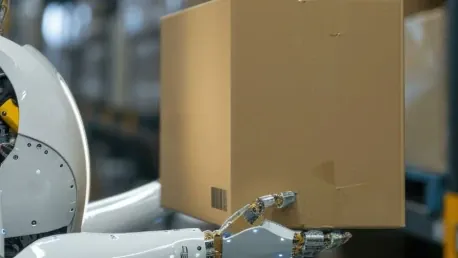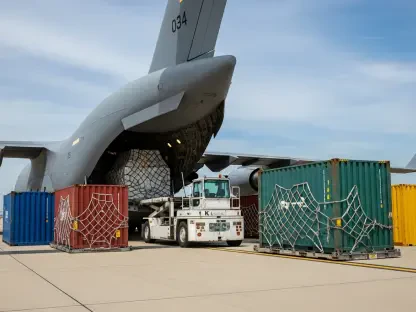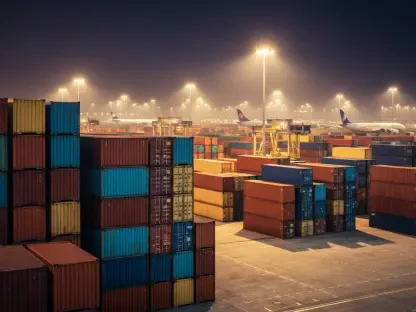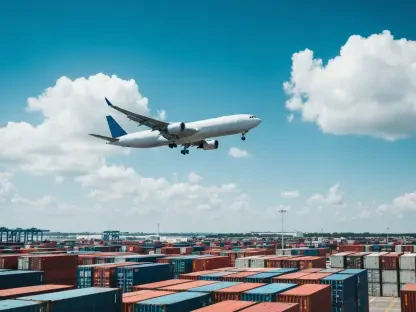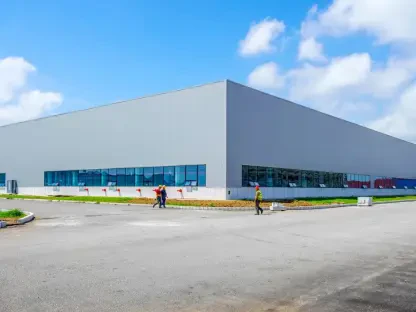The global logistics automation market is experiencing an unprecedented surge, driven by various factors including increasing efficiency needs, enhanced workforce safety, the explosive growth of e-commerce, and significant advancements in robotics. Recent data indicates that this market is projected to reach a staggering $147.4 billion by 2030, growing at an impressive compound annual growth rate (CAGR) of 11.9%. Key industry players such as Jungheinrich AG, Honeywell International Inc., and Murata Machinery Ltd. are making substantial investments in automation solutions to keep up with the escalating demand.
Major Investment Trends in Logistics Automation
Adoption of Automated Material Handling
One of the most significant trends shaping the logistics automation market is the widespread adoption of automated material handling technologies by large enterprises. For instance, DHL Supply Chain revealed a considerable $15 million investment in robotics from Boston Dynamics in January 2022, specifically aimed at automating warehousing processes across North America. This move reflects the industry’s increasing focus on leveraging automation to optimize operational efficiency and streamline various processes.
The implementation of automated material handling technologies is not only about cutting costs but also about improving overall workflows. Automation in warehouses and storage facilities minimizes human error, reduces labor costs, and ensures faster and more accurate order fulfillment. Companies are now more than ever driven to adopt these advanced technologies to stay competitive in an increasingly fast-paced market. Furthermore, the deployment of such technologies can significantly boost workforce safety, minimizing workplace injuries and accidents commonly associated with manual handling tasks.
Regional Market Leadership: North America
On a regional scale, North America stands out as a leader in the logistics automation market, supported by a surge in e-commerce activities and innovative solutions designed to address labor shortages. The adoption of robots across various logistics operations within this region has significantly propelled the demand for automation. Companies face growing consumer expectations for faster, more reliable delivery times, prompting the increased integration of advanced robotic systems into their operations.
Moreover, the regional market benefits from substantial government and private sector investments in automation technologies. These investments are seen primarily in warehousing, order fulfillment, and transportation management systems. North America’s precedence in this sector is further driven by a robust technological infrastructure and a highly skilled workforce capable of developing and managing sophisticated automation systems. The widespread implementation of these technologies underscores the regional market’s continuous efforts to enhance efficiency and productivity in logistics operations.
Segmentation and Product Types in Logistics Automation
Dominance of Warehouse and Storage Management
The logistics automation market is comprehensively segmented by application, with warehouse and storage management holding the largest market share. The significant adoption of technologies such as stacker cranes, automated guided vehicles, and pallet conveyor systems is driving this market segment. These technologies are essential for optimizing space utilization, reducing manual labor, and improving inventory management within large-scale storage facilities.
The reliance on sophisticated warehousing solutions ensures that logistics operations can meet increasing consumer demands without compromising on delivery times or service quality. Such technologies enable real-time tracking of inventory levels and efficient space management. For businesses, the adoption of these systems translates into lower operational costs and a dramatic improvement in service delivery. Consequently, these factors collectively contribute to the substantial market growth witnessed in this segment.
Transportation Management Growth
Another pivotal market segment is transportation management, forecasted to witness the highest CAGR of 13.2%. This rapid growth is attributed to the segment’s ability to reduce freight costs, enable real-time delivery tracking, and enhance customer service. The integration of automation technologies in transportation management facilitates improved logistics routing, fuel efficiency, and on-time delivery performance.
The advancements in software solutions for transportation management systems (TMS) are playing a crucial role in this growth. These software solutions provide intricate data analytics, helping businesses gain insights into their logistics operations and enabling more effective decision-making processes. Automation within this segment not only enhances operational efficiency but also contributes to better sustainability practices by optimizing resource utilization and minimizing carbon footprints.
Regional and Product Type Dynamics
Asia-Pacific’s Accelerating Growth
Region-specific analysis forecasts that the Asia-Pacific region is poised to register the highest CAGR of 13.4%. This impressive growth is driven by the burgeoning e-commerce sector and an escalating need for rapid last-mile delivery services. Countries within this region are increasingly adopting advanced technological solutions, such as robotics and autonomous mobile robots, to fulfill the high consumer demand efficiently and effectively.
The growing investment in logistics infrastructure and the adoption of innovative automation solutions are key factors accelerating the market’s growth in Asia-Pacific. Governments and private enterprises alike are recognizing the potential of automation to bolster economic growth and competitiveness. The region’s flourishing e-commerce industry and its emphasis on shortening delivery times are substantial contributors to this rapid market expansion, positioning Asia-Pacific at the forefront of global logistics automation advancements.
Software and Hardware Segmentation
The global logistics automation market is witnessing an extraordinary rise, driven by a host of factors such as increasing efficiency requirements, enhanced safety for the workforce, the booming growth of e-commerce, and major advancements in robotics technology. According to recent estimates, this market is expected to reach a remarkable $147.4 billion by the year 2030, growing at an impressive compound annual growth rate (CAGR) of 11.9%. Key industry players like Jungheinrich AG, Honeywell International Inc., and Murata Machinery Ltd. are investing heavily in automation solutions to meet the skyrocketing demand. These investments not only aim to streamline operations and reduce human error but also to improve the overall speed and reliability of supply chains. E-commerce giants and manufacturing companies are increasingly relying on automated solutions to handle complex logistics tasks, from warehousing to transportation. As a result, the logistics automation market is set to play a crucial role in shaping the future of global trade and commercial activities, making it one of the most dynamic and rapidly evolving sectors today.
